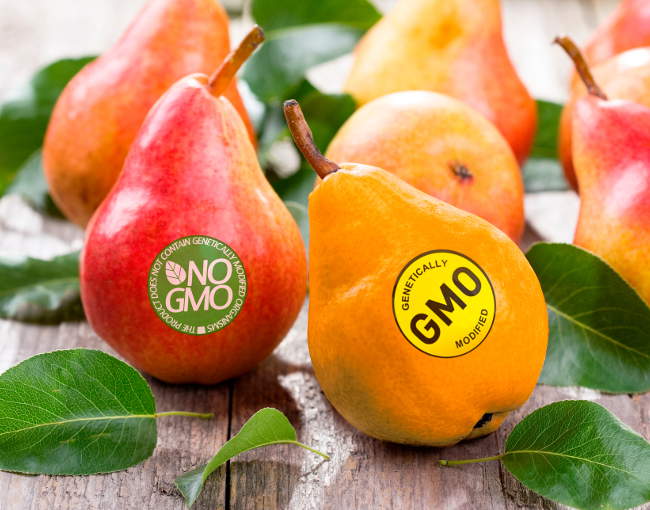Facing a consumer fraud lawsuit based on your product’s “non-GMO” or “GMO-free” labeling? The USDA’s forthcoming rules on the National Bioengineered Food Disclosure Standard may impact your defense.
In a few months, the USDA is required to publish its proposed final rule on the National Bioengineered Food Disclosure Standard (“the GE Disclosure Law”). The rule will address what foods should be considered “bioengineered,” what amount of bioengineered substances in a food product will trigger a disclosure requirement, and how the presence of bioengineered foods must be disclosed, among many other thorny and highly technical issues.
“GMO-Free” litigation and early preemption rulings
The issue of disclosure (or non-disclosure) of bioengineered food ingredients is also playing out in consumer fraud false advertising lawsuits across the country. In these cases, plaintiffs contend that products labeled as “non-GMO” or “GMO-free” are false and misleading because some of the ingredients are actually derived from genetically engineered substances or were made with genetic engineering techniques.
Defendants in these lawsuits have challenged the claims (so far unsuccessfully) as being preempted by the GE Disclosure Law, which expressly preempts states from establishing their own GE food labeling requirements. (See 7 U.S.C. § 1639i(b).) This preemption provision was included in the GE Disclosure Law to stop states (e.g., Vermont) from implementing conflicting GE labeling requirements.
At least two courts have held that the GE Disclosure Law did not preempt consumer fraud claims because the statutes invoked by the plaintiffs did not affirmatively impose a GE labeling standard or requirement. Instead, those statutes merely prohibited companies from making false or misleading voluntary food labeling statements. [See In re Kind LLC “Healthy & All Natural” Litig., at *3 (WL 1156009, S.D.N.Y. Mar. 2, 2018); Kao v. Abbott Labs, Inc..] In all reported decisions considering the issue, “non-GMO” false advertising claims have survived a preemption attack.
These outcomes don’t necessarily mean that defendants should abandon a preemption defense. Certainly, you should consider federal preemption in your responsive pleading. These early case results, however, suggest that a motion based on preemption might have a greater chance for success after initial discovery and record development, especially if the plaintiffs’ theory of the case evolves over time.
So your preemption attack failed?
Even if a preemption attack fails, it is still important for food companies to pay close attention to the USDA’s forthcoming proposed rules and consider moving to stay the litigation pending their publication.
That is because courts have signaled a willingness to take guidance from the USDA on when a food can be considered “bioengineered” and to look to the USDA’s definitions when they consider motions for rulings as a matter of law that a food is not bioengineered, or is “non-GMO.”
As one court noted, although the USDA’s standard won’t “conclusively shed light on whether a reasonable consumer would have been deceived by KIND’s representation that its products were GMO free … [A]gency ‘guidance could explain whether ingredients’ derived from genetically modified crops could be considered “non-GMO.” [In re Kind LLC "Healthy & All Natural", at *6.] The court further noted that “[t]here is no doubt that a national GMO standard will be relevant to many of the underlying issues in this action.”
The Northern District of California signaled an even stronger deference to the USDA’s forthcoming rules and definitions, stating:
Even though Plaintiffs’ claims are not preempted, to prevail on their claims they must generally establish that the labels on Similac Non-GMO were misleading. The USDA, to whom Congress has exclusively provided authority to regulate GMO labeling in the interest of uniformity in administration, will be issuing rules that bear directly on this inquiry. … These regulations will address the level of genetically modified ingredients that a product can contain while still being marketed as “GMO-free” or “non-GMO.” … If the USDA issues a zero-tolerance rule, Plaintiffs need only prove that Similac Non-GMO contained even a trace amount of genetically modified ingredients to prevail on their claim. If the rule allows for some threshold amount of genetically modified ingredients, all that will be required is to compare the test results with the threshold amount set by rule. If Abbott’s labeling complies with USDA rules, Plaintiffs would have great difficulty in proving their claims for unfair competition, false advertising, or breach of warranty. In any event, the agency action will dramatically streamline this case.(Kao v. Abbott Labs. Inc., at *11)
Not all courts will give the USDA’s forthcoming definitions the high level of deference that the Kao court suggests. And not all courts will adopt the GE ingredient “threshold amount” approach suggested by the Kao court, regardless of the proposed rules. It is reasonable, however, to assume that most courts will, at a minimum, consider and give some deference to the USDA’s definitions.
That courts are willing to consider the USDA’s forthcoming definition of “bioengineered food” and “bioengineering” – as opposed to a definition put forth by plaintiffs’ attorneys, which will undoubtedly be broad and nebulous – suggests that defendants should consider moving to stay these types of cases pending the proposed rules.
There is certainly reason to speculate that the Trump administration’s animosity toward increased regulation in general, and dislike of mandatory GE labeling in particular, may result in narrow definitions of “bioengineering” and “bioengineered food.” Indeed, the law’s narrow definition of “bioengineering” already arguably excludes certain gene-editing techniques that plaintiffs would define as “GMO.”
If a food is not considered bioengineered by the USDA, courts may be more likely to find that such food is not a “GMO” as a matter of law, and dismiss the lawsuit outright. A court could also, after referencing the USDA’s definitions, determine as a matter of law that no reasonable consumer could be misled by the challenged non-GMO statement. Of course, whether to put this question to a judge (and not the jury) should be carefully considered in light of the venue and court’s record on related issues.
Summary
In short, the USDA’s forthcoming definitions of “bioengineering” and “bioengineered food” could help the defense put a quick end to false advertising lawsuits based on “non-GMO” or “GMO-free” labeling. Although arguing for an early preemption ruling may be an uphill battle, moving to stay may provide initial relief and could ultimately strengthen a merits defense.




